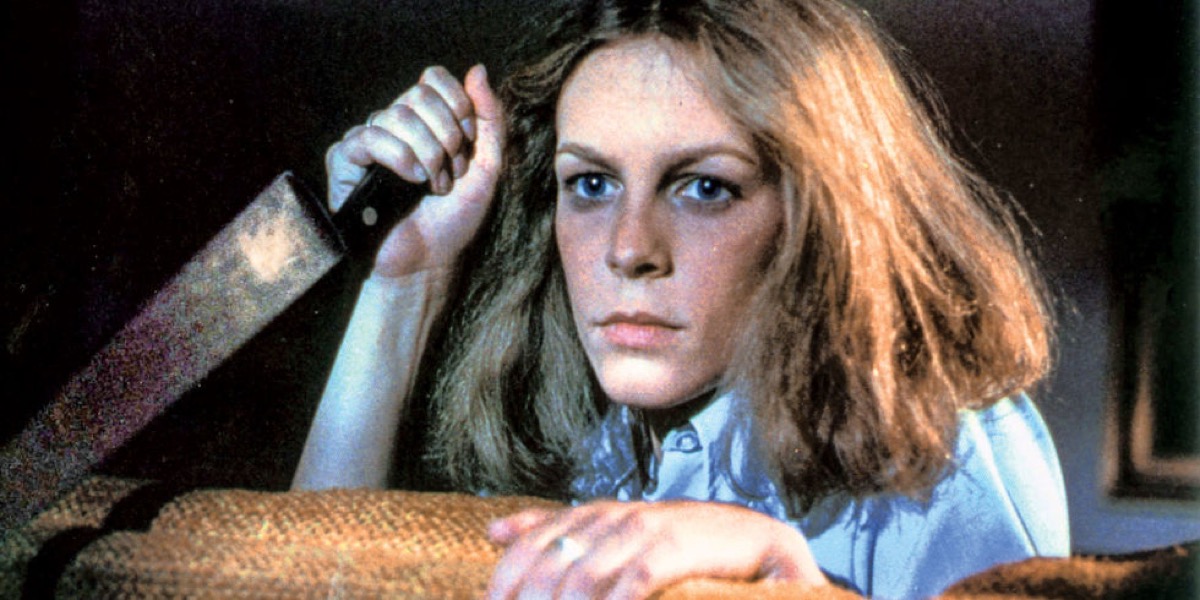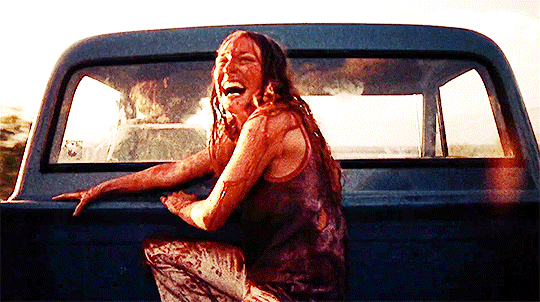The Final Girl Trope in Horror Movies, Explained
[Survivor plays in the distance]

Tropes are pretty much the cornerstone of every story. You can play them straight, subvert them, twist them — much how you can start from a single LEGO block to realize a thousand different builds — but you’ll always have to start from one single trope. And over the years some tropes become invariably attached to a certain genre, so much so that they become a defining characteristic for that kind of story — and that’s precisely what happened with the Final Girl trope and the horror movie genre.
So, first things first — what is a Final Girl exactly? A Final Girl is the last survivor at the end of the movie. She might be the one who ends up defeating the serial killer/monster/villain or who is saved by an external force — say the police or another lone hero — but the basic definition is that the Final Girl is the one who escapes the massacre that goes on during the movie’s runtime and lives to tell the tale. If there’s a sequel then she might end up dying in the sequel or getting institutionalized in some way, but that’s not exactly as important as what she does in her first confrontation with the villain. There, her point of view is the one the audience ends up identifying with, especially from after the mid-point of the movie onwards — when a good chunk of characters have died and the stakes get higher in preparation for the climax.

The Final Girl was defined for the first time in 1992 by film theorist Carol J. Clover, in her book Men, Women and Chain Saws: Gender in the Modern Horror Film. Clover describes the final girl as “the one who encounters the mutilated bodies of her friends and perceives the full extent of the preceding horror and her own peril; who is cornered, wounded; whom we see scream, stagger, fall, rise and scream again. She is abject terror personified.”
The birthplace of the Final Girl — and the one Clover studied for her book and her definition — is the slasher genre of the Seventies and Eighties, where we can see the Final Girl take shape and become the trope she actually is now. Think Jess Bradford from Black Christmas, Sally Hardesty from The Texas Chainsaw Massacre, Laurie Strode in Halloween, Ginny Field from the Friday the 13th series, Nancy Thompson from Nightmare on Elm Street, even Ellen Ripley from Alien. TV Tropes argues that the very earliest example of Final Girl can be found in Alfred Hitchcock’s Psycho in the character of Lila Crane, who investigates her sister’s disappearance and survives her encounter with the killer. While Psycho itself can easily be considered a precursor of the slasher genre, the trope only got codified later — to great pop culture success and much debate among film theorists.

The issue is — is the Final Girl a feminist trope? On the surface, it doesn’t really look like it. The Final Girl has some very defined characteristics beyond being the last one standing that seem to emphasize “traditionally feminine” values — maybe as a reactionary movement against the wave of female sexual liberation happening just as slasher movies were center stage in pop culture. In her original incarnations, she’s often virginal and pure, doesn’t indulge in vices like alcohol and cigarettes, and she’s way more intelligent than her vapid companions who end up getting offed by the villain in a wide variety of gruesome ways. In the very early examples of the trope, she’s also often saved by an external character rather than fighting the villain herself — which means that she also falls under the Damsel in Distress category.
Then again, a counterargument born out of feminist film theory states that the Final Girl is actually one of the very few ways movies can have their male audience identify with a female main character. The Final Girl is a girl also because at the end she has to feel all of the “abject terror” that Clover was talking about — and a male-dominated audience of a male-dominated genre would have some difficulty seeing that abject terror depicted on a man’s face. Because the patriarchy and toxic masculinity are fun! So the Final Girl has to be a girl to really delve into the bottom of the well of fear — and in doing so audiences have to identify with her, experience her emotions and see the world through her eyes.
Whatever your stance on the feminist/not feminist debate is, what’s certain is that like every other trope in existence, the Final Girl has also changed and evolved with the times — and while you still find her played straight or maybe just slightly modified, you can also find stories where the trope is completely subverted. Buffy Summers from Buffy the Vampire Slayer is a famous example of subversion — in a “classic” Final Girl slasher movie, a character like Buffy would have been the one who died even before the opening credits, while in the series she’s the Final Girl to end all Final Girls.

The VVitch, directed by Robert Eggers, is also an excellent example of subversion — Anya Taylor-Joy’s Thomasin is in fact the last one of her family, yes, but she is just because she killed her mother. And then she becomes a witch. And she might have even been the villain from the start. The same reasoning applies to Midsommar, where Dani does survive — but does so by becoming a part of the cult and also condemning her boyfriend to get burned alive in a ritual sacrifice. A milder example of trope variation rather than subversion can instead be found in A Quiet Place, where there are two Final Girls rather than one — Regan Abbott is the one that fits the trope’s characteristics more closely, but her mother Evelyn also plays a fundamental part in eliminating the monster. Women of color are increasingly taking their place as powerful final girls in Western horror, like Selena in 28 Days Later, Lex in Alien vs. Predator, and Jeryline in Demon Knight, but this is an area that would benefit from a lot more attention to representation. (For an excellent deep dive into the history of the depictions of Black people in horror, as well as Black horror films, see the Shudder documentary Horror Noire: A History of Black Horror.)
Whether she’s played straight or subverted, the Final Girl is undoubtedly one of the most famous tropes in pop culture — even if you’re not a big fan of storytelling devices and structure you’ve probably heard of her. So now that you know what she looks like and what she does within the story, you’ll be able to recognize her every time she appears on your screen.
(via: No Film School; image: Universal)
Have a tip we should know? [email protected]